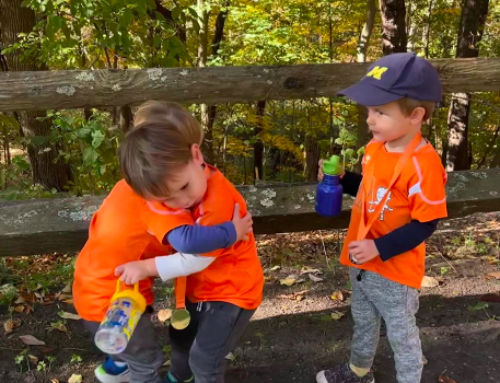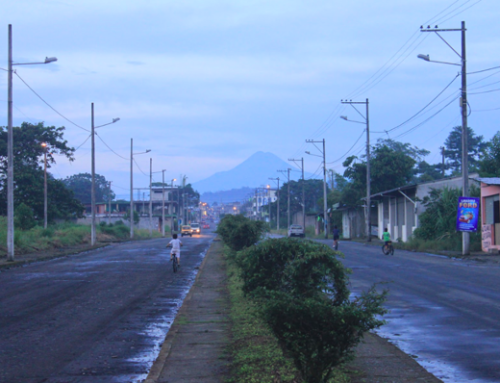In the opening pages of the The Care Manifesto (2020), The Care Collective (a group of academics and activists across different disciplinary and political backgrounds formed in 2017) draws our attention to the paradox of care in the contemporary world: “Although we are hearing more about care in these unsettling days, carelessness continues to reign” (3). In their critical examination of the COVID-19 pandemic, deepening inequality, climate destruction and dozens of other all too familiar forms of our unsettled days, they illustrate the ways a rhetoric of care has become intertwined with that of a crisis without end. Contemporary capitalism, like the liturgical order of ritual cycles (Rappaport 1999), depends on the “eventfulness” of crisis that both generates and de-stabilizes the everyday (Ivy 1996, 12). In this order of things, Narkotzy and Besnier (2014) write, “[c]risis signals a breakdown in social reproduction, a mismatch between configurations of cooperation that used to ‘work,’ by producing particular expectations and obligations and different configurations of opportunities and resources” (57). In other words, crisis not only compels us to “act now before it is too late,” but it also determines the forms and temporalities of our future action. From this perspective, crisis is a form of “eventfulness,” of the instability inherent in processes of social reproduction, a reproduction that implies both the inherent crisis of capitalist structures oriented toward unlimited accumulation as elucidated by Marxist theory, as well as the crisis of the reproduction of bodies capable of “making a living” and supporting biopolitical reproduction through care (Fraser 2016). As Baraitser and Brook (2021) point out, “[c]apitalism cannot do without care, any more than it can function outside of the temporality of crisis” (231).
“Old age is a crisis,” remarked Michel Foucault (1986) in his short essay, “Of Other Spaces,” “but it is also a deviation,since in our society where leisure is the rule, idleness is a sort of deviation” (25). While public discourses framing the aging society perpetually produce the rhetoric of crises (the long-term care crisis, the care worker shortage, the dementia “epidemic”, loneliness, etc.), these too are placed into the order of capitalist crisis, raising concern over the social and financial costs of our longevity and the worth or deservingness of frail and disabled bodies. Notice how the deaths of millions of older people during the COVID-19 pandemic (around 80% of the total deaths) did not produce a mass movement to revolutionize social conditions underlying their vulnerability to premature expiration, despite the fact that most of us will ourselves reach old age and face similar threats (see Cohen 2020, Badone 2021). This devastating loss was unremarkable to many because, as Foucault pointed out, aging was already marked as deviant—an “idleness” that was neither productive nor reproductive—an excess of life that could not be absorbed or sublimated, but only disposed of (Shaw and Waterstone 2020, 26). It is this condition of chronic deviance that best characterizes the place of old age in contemporary post-welfare capitalist societies, where longevity is both ordinary and unremarkable while simultaneously punctuated by risk and danger.
In Japan, where one in three people will be aged 65 or older by 2035, the response to the excess of chronic deviance has been containment, and the prototypical site for the containment of deviance is the prison. It is not surprising, then, that the proportion of the prison population over 65 has quadrupled between 2001 (3.6%) and 2021 (12.9%) (Ministry of Justice 2022). The argument that prisons are now places used for the containment of “idle” older people is made stronger when we consider that, unlike other countries with aging prison populations (such as the USA and Europe), the majority of older people in Japanese prisons were arrested for crimes committed as older people (rather than aging in prison due to long sentences received in youth). Moreover, formerly incarcerated older Japanese adults have a higher recidivism rate than any other age cohort (22.8% within the first two years following release). Over 70% of older people in Japanese prisons have a prior criminal record. The chronic deviance of old age is not only spatially contained through carceral enclosure, but temporally contained within rhythms of recidivism and care (Sufrin 2017).
The carceral containment of chronic deviance has transformed prisons into spaces of care and belonging (ibasho) for older adults marginalized as chronically deviant. Prison was a “home” for those without family or other meaningful social “ties” (en) (Allison 2013; Jensen, Ishii and Swift 2016; Yamamoto 2018). Despite numerous comparisons between prisons and nursing care homes (cf. Nishida 2018), one important difference is that day-to-day care in prison is usually provided not by staff, but by other prisoners. “Elderly care in the prisons is hell!” one man told me without hesitation when I asked him about his experience as a carer during incarceration. He continued,
Nobody teaches you a thing [about care of older people]. There’s no one [among the prison staff] who knows anything about it. You know, just things like do this this way and do that that way, no one teaches you. So, they just throw you in deep end and you gotta do the real thing with no prep. All of a sudden, it’s, “change that person’sdiaper, take that person to the bath, change that guy’s clothes,” just, “get in and do it right away!”
For this man, learning to become a carer during incarceration was hard, but it was through this care that his faith was deepened and he found a way to transcend the daily dehumanization of prison life.
For me the biggest thing was what Mother Teresa said about helping the person in front of you. Love that person right in front of you. Really attend to their suffering. I was able to learn that through doing elder care. I would pray. “God…” And, it’s because of those prayers, that I was saved.
This narrative scaffolding was not limited to Christians. Other incarcerated Japanese men described care in prison as a kind of “ineffable connection” (en) (Goldfarb 2016, 53). In a recent news story, one 82-year-old prisoner explained why he provided care for his 80-year-old cellmate, saying, “I want to do what I can while I have my life. Maybe it’s fate (en) that I’m sharing a room with him like this” (Chūgoku Shinbun, Aug 17, 2022). For this individual, and others I spoke to who provided care for the aging prison population, care was not only demanding physical work, but also the work of careful attention and love (hooks 2001; Thompson 2021; Washington 2019). It was not only affective labor, but aesthetic labor: it directed attention to the embodied being of the other to whom one sensed an ineffable connection. Aesthetic care in carceral spaces raises ethical questions regarding who decides which bodies are deserving of care, as well as how care may afford the potential to fashion a “good life” even within circumstances of intense suffering.The aestheticization of care behind prison walls runs counter to the sensory deprivation of carceral containment. Incarceration not only incapacitates the person, but it is designed to pacify feelings by dulling the senses: the drab khaki uniforms, ill-fitting on quiet bodies; the bland, joyless food; the blank, colorless walls. Prisoners march in single file to the military drill instructor commands of the prison staff. Prisoners do not speak, nor even make eye-contact with other prisoners during the day for fear of punishment (typically a day or longer seated on the floor, staring at the wall). Most of the time, there is silence (Young 2019). If post-welfare capitalism has anesthetized the older body, it is the unpaid and invisible mutual care among prisoners and ex-offenders that re-aestheticizes that body, re-placing it within a world of relations and value.
Prison care might make life more bearable for both carers and older people in prison, but it does not insure care after release. Even when a formerly incarcerated person’s sentence is completed, they remain both deviant and stigmatized by their criminal history, and for many, life on the outside is more unsettled and tumultuous than it was behind the prison wall (Lawson 2021). A common saying goes: “It’s colder in the wind of the outside world than it is behind the walls.” This wind can be especially chilling for formerly incarcerated older adults who are dependent on care assistance and unable to participate in typical routes to post-release resettlement.
Resettlement in Japan is equated with the ex-offender’s cooperation in the social reproduction of contemporary capitalist modes of production and reproduction; you must find employment and/or reconnect with family members. For the majority of formerly incarcerated older people, however, neither of these is an option. It is an exclusion that renders older and disabled people as unsettle-able subjects outside of carceral care and containment. Even with the support from NGOs and charities, formerly incarcerated older adults are not only turned away from jobs, but are often rejected by landlords, community members, and nursing care homes. One resettlement support worker explained how caring for older and disabled people after prison required a long process of negotiation between facilities, communities, and support staff.
[Community members] might see something on the news and think “Oh, there was a person who hurt a little girl, or someone who caused a big fire—no, no, no, we can’t have those people coming here! If something were to happen, then everyone would make all the people with disabilities leave!” That’s what they really think. We try to calm them. We don’t argue or tell them they’re wrong. But then we say, “why don’t we go and meet the person [in prison] together first?” And if they go meet the person, 80% of the time they agree to accept them.
This gentle approach to deconstructing stereotypes and transforming communities, one formerly incarcerated person at a time, was slow, painstaking, and artful. It was aesthetic care. Each time a community agreed to house or provide support for someone coming out of prison, there was a risk that the person might reoffend in the community, and efforts to build trust would be set back again. Yet, it is these sorts of projects that carve out new times and places of acceptance and offer a way to bring together care and justice in ways that settle the unsettle-able carceral subject and begin to repair the damage wrought by ageist politics.

Compared to care in prison, life outside was often lonely and frustrating for older ex-offenders like “Ji” (72) (pictured here). Photo credits: Jason Danely.
References
Allison, Anne. 2013. Precarious Japan. Durham, NC: Duke University Press.
Badone, Ellen. 2021. “From Cruddiness to Catastrophe: COVID-19 and Long-Term Care in Ontario.” Medical Anthropology 40 (5): 389–403. https://doi.org/10.1080/01459740.2021.1927023.
Baraitser, Lisa, and William Brook. 2021. “Watchful Waiting: Temporalities of Crisis and Care in the UK National Health Service.” In Vulnerability and the Politics of Care: Transdisciplinary Dialogues, edited by Victoria Browne, Jason Danely, and Doerthe Rosenow, 230–47. Proceedings of the British Academy 235. Oxford: British Academy Press of Oxford University Press.
The Care Collective. 2020. The Care Manifesto: The Politics of Interdependence. Verso Books.
Chūgoku Shinbun. 2022. “Jukei-sha dōshi no rōrō kaigo `kono yarō to omou koto mo aru’ (rupo Onomichi keimushisho)” [Elderly care between inmates “Sometimes I think ‘you bastard'” [Reportage Onomichi Prison Branch]. 17 August, 2022 (Accessed 31 May 2023) https://www.chugoku-np.co.jp/articles/-/200493
Cohen, Lawrence. 2020. “The Culling: Pandemic, Gerocide, Generational Affect.” Medical Anthropology Quarterly 34 (4): 542–60. https://doi.org/10.1111/maq.12627.
Foucault, Michel. 1986. “Of Other Spaces”. Diacritics 16: 22–27.
Fraser, Nancy. 2016. “Contradictions of Capital and Care.” New Left Review, no. 100 (August): 99–117.
Goldfarb, Kathryn. 2016. “‘Coming to Look Alike’: Materializing Affinity in Japanese Foster and Adoptive Care. Social Analysis, 60(2): 47-64.
Herrity, Kate, Bethany E. Schmidt, and Jason Warr. 2021. Sensory Penalities: Exploring the Senses in Spaces of Punishment and Social Control. Bingley: Emerald Publishing Limited.
hooks, bell. 2016. All About Love: New Visions: 1. 1st edition. New York: WmMorrowPB.
Ivy, Marilyn. 1996. “Tracking the Mystery Man with the 21 Faces.” Critical Inquiry 23 (1): 11–36.
Jensen, Casper Bruun, Miho Ishii, and Philip Swift. 2016. “Attuning to the Webs of En: Ontography, Japanese Spirit Worlds, and the ʻTactʼ of Minakata Kumagusu.” HAU: Journal of Ethnographic Theory 6 (2): 149–72. https://doi.org/10.14318/hau6.2.012.
Kleinman, Arthur. 2009. “Caregiving: The Odyssey of Becoming More Human.” The Lancet 373 (9660): 292–93.
Lawson, Carol. 2021. “Subverting the Prison: The Incarceration of Stigmatised Older Japanese.” International Journal of Law in Context 17(3): 336–55. https://doi.org/10.1017/S1744552321000422.
Ministry of Justice (Hōmusōgo Kenkyūjo). 2021. Reiwa 3 nenban Hanzai Hakusho [2021 Crime White Paper].
Narotzky, Susana, and Niko Besnier. 2014. “Crisis, Value, and Hope: Rethinking the Economy: An Introduction to Supplement 9.” Current Anthropology 55 (S9): S4–16. https://doi.org/10.1086/676327.
Nishida Hiroshi. 2018. Kōrei jukei-sha de kaigo shisetsu-ka suru keimusho. Sono mirai wa zeikin no tōnyū ka, soretomo shūyō no kaihi ka [Prisons are turning into an aged-care homes for elderly inmates. Invest future taxes or avoid detention?]. Accessed July 28, 2022. https://job.minnanokaigo.com/news/kaigogaku/no509/
Rappaport, Roy A. 1999. Ritual and Religion in the Making of Humanity. Cambridge University Press.
Shaw, Ian G. R., and Marv Waterstone. 2020. Wageless Life: A Manifesto for a Future beyond Capitalism. Baltimore, Maryland: University of Minnesota Press.
Sufrin, Carolyn. 2017. Jailcare: Finding the Safety Net for Women Behind Bars. Berkeley: University of California Press.
Thompson, James. 2022. Care Aesthetics: For Artful Care and Careful Art. London: Routledge. https://doi.org/10.4324/9781003260066.
Washington, Keahnan. 2019. “Love-Politics and the Carceral Encounter.” Anthropology News 60 (1): e65–70. https://doi.org/10.1111/AN.1074.
Yamamoto, Joji. 2018. Keimusho Shika Ibasho Ga Nai Hito-Tachi: Gakkōde Wa Oshiete Kurenai, Shōgai to Hanzai No Hanashi [People Who Have No Place but Prison: The Stories about Disability and Crime That Schools Don’t Teach]. Tokyo: Otsuki Shoten.
Young, Alison. 2019. “Japanese Atmospheres of Criminal Justice.” The British Journal of Criminology 59 (4): 765–79. https://doi.org/10.1093/bjc/azy073.
Jason Danely is Reader in Anthropology at Oxford Brookes University. His latest book is Fragile Resonance: Caring for Older Family Members in Japan and England (Cornell University Press 2022). His next book, on formerly incarcerated older adults, Unsettled Futures: Old Age After Prison in Japan (Vanderbilt University Press) is due out in 2024.




